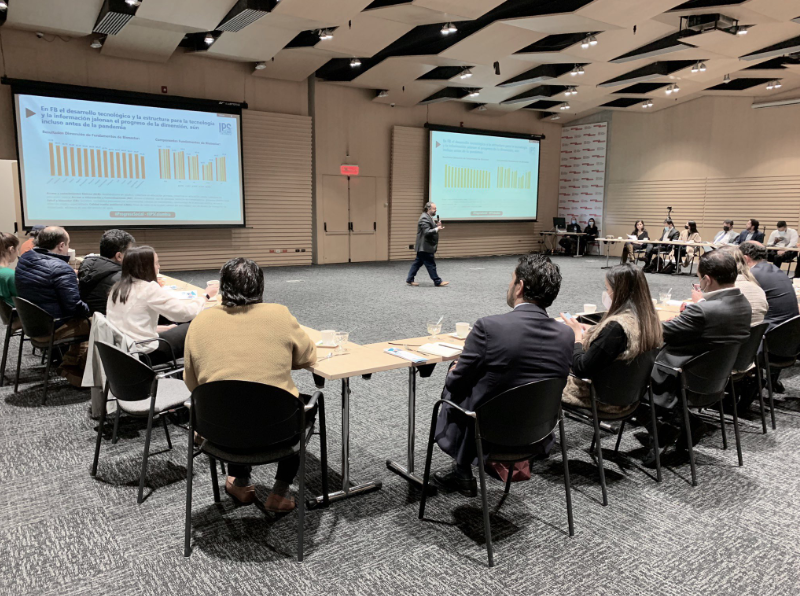María Fernanda Cortes is the technical coordinator of the Red de Ciudades Cómo Vamos in Colombia, an initiative supported by the Corona Foundation. Here she talks to guest editor Rodrigo Villar about the development of the initiative and its successes to date in progressing the SDGs.
 Representatives from different cities share their SDG advancement metrics. Credit: Fundación Corona
Representatives from different cities share their SDG advancement metrics. Credit: Fundación Corona
The Cómo Vamos model, established in 1998, has been replicated in 42 municipalities in Colombia and in 14 cities in other Latin American countries. It has three pillars designed to help them achieve the SDGs. The first pillar of the Cómo Vamos model is to evaluate the quality of life and the fulfilment of the goals proposed in the cities’ development plans. The second is to communicate and disseminate the results of this evaluation to citizens. And the third is to encourage the active and informed participation of citizens in the cities’ development plans. In 2016, the network incorporated the 2030 Agenda to promote sustainable cities and since that year has been developing a strategy of localisation of the SDGs. Under this strategy, it created a tool for measuring the SDGs at the city level, a toolkit for the localisation of SDG 11 (make cities inclusive, safe, resilient and sustainable) and a guide for the preparation of voluntary local reports in Colombian cities.
Rodrigo Villar: María Fernanda, what is the importance of the 2030 Agenda for cities and what are the reasons that drove the Corona Foundation to support both the incorporation of the SDGs and localisation strategies through the Red de Ciudades Cómo Vamos?
Subscribe now from only £45 a year!
This article is only available for our subscribers
Existing users can login here



